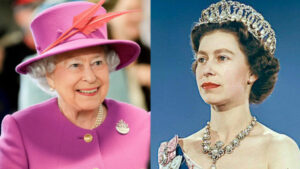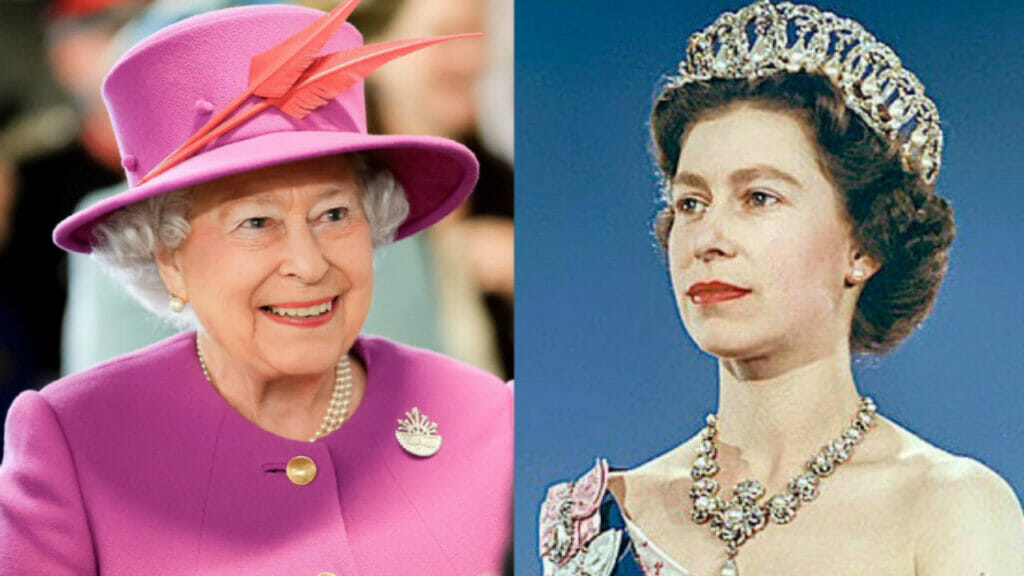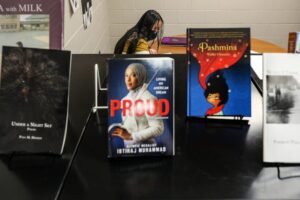
“Like all the best families, we have our share of eccentricities, of impetuous and wayward youngsters, and of family disagreements.” – Queen Elizabeth II
Queen Elizabeth the Second of the United Kingdom, leader of the 54-member independent countries that make up the Commonwealth in Africa, Asia, the Americas, Europe, and the Pacific, is arguably the most powerful woman in the world. On June 2, 2022, the British Monarch already having sailed into history on several other rounds, is the fourth longest-serving monarch, head of state and government, and in a democracy. She is celebrating 70 years of being on the throne since 1953 when she was crowned Queen.

But Elizabeth was not on the line to be the Monarch of the former sea power and greatest empire in pre-World War II years. Her uncle King Edward VIII, for love, abdicated his royal position to marry American divorcee Wallis Simpson in 1936. Elizabeth’s father was crowned King George VI and thrust his daughter on the path to being Queen, a fate that propelled her to rule and in an era women spent over 50 years wedging sticks in the glass ceiling. Queen Elizabeth II is on the other side of the ceiling, seated comfortably, ordering both men and women, redirecting the course of events, effortlessly commanding love and respect from her staff, children and relatives, world leaders, and the ordinaries (whether in the UK or around the world).
As head of the Commonwealth, Queen Elizabeth is head of a community of countries that has 2.5 billion citizens, with more than 60 percent aged 29 or under. The Leaders of member countries shape Commonwealth policies and priorities and meet every two years at the Commonwealth Heads of Government meeting.
There is a lot that can be written about the soft-spoken Queen Elizabeth II, who married Phillip Mountbatten in 1947 in a colorful wedding that drew 100,000 outside the Buckingham Palace Mall and 200 million watching on television. But what is globally fascinating is that there are probably truckloads of pictures of Elizabeth and Philip, who was crowned the Duke of Edinburgh, smiling, or chuckling at each other.
Despite the miles and miles of floor and wallpaper stories that can be written about her, celebrating the gallantry, courage, stoicism, and pure statesperson-hood that has been embodied in Queen Elizabeth II of the House of Windsor, a comment will be made on four of these. Whatever else may be said about her, she is first to talk strongly and passionately about her faith; she is a bible-reading and praying Christian, takes seriously the values of her faith, and is guided by them in all she does.
1. From colonial power to Commonwealth of Nations. — By the time of her coronation, Great Britain, once a naval power and commanding the largest colonial footprint that spanned from the Americas, Africa, Asia, and Pacific islands including Australia and New Zealand. From losing its place as a superpower, Britain within a decade of her becoming Queen was losing its empire as colony after colony untangled itself from the clutches of the colonial ruler and gained independence. As colonies became independent they sent in applications to the Commonwealth of Nations. The 54-member organization has a combined population of 2.4 billion, which is almost a third of the world’s population, of whom 1.21 billion live in India, and 95% live in Asia and Africa combined.
2. Women rule long in British monarch. – Of the world’s three female long-reigning monarchs, Queen Elizabeth is the longest-reigning at 70 years. Her great Grandmother Queen Victoria reigned for 64 years, and Queen Wilhelmina I of The Netherlands reigned for 58 years. The remarkable trait of the two British Queens is that while Victoria left a legacy of strict morality stranglehold on her subjects in and outside Britain, Elizabeth’s reign has been during an era where women have for over half a century strained to get recognition, fight for a place at the table, crack the viciously hard glass ceiling, or champion equality with male counterparts. Elizabeth has been at the table, sitting on the glass ceiling and due to the abdication of an uncle was thrust through the ceiling and managed to grasp the power thrust at her, her charismatic nature leading to the whole world embracing her as its Queen.
3. Strong family riddled with scandals and globally-felt painful tragedies. – The picture of Queen Elizabeth and her husband, the late Duke of Edinburgh, married for 73 years was the proverbial prince and princess fairy tale. The tale was lived writ large in front of a global platform that through the years moved from telegrams and radios to television, then social media portals such as Facebook, Instagram, and Zoom. What used to be hidden from public eyes, became globally visible to a wide audience. Regrettably, three of Queen Elizabeth’s children experienced a divorce. Her own sister, the late Princess Margaret finally married, but not before a long affair with a married man. Charles divorced his highly popular wife, Princess Diana after the room got crowded with his affair with the married Camila. His ex-wife Diana moved on to an affair with an Egyptian film producer Dodi Fayed. His brother Andrew divorced Fergie after infidelity; however, in 2021 Prince Andy was stripped of his royal title after being accused of paying a minor for sex. Other scandals on the heel of scandals emerged when after marrying his princess, Harry and African American princess hear the Brits wondered loudly (what! No more stiff upper lips!?) how dark his child would be. Prince Harry, like his grand uncle, gave up royalty and took his family across the Atlantic. He did not want to experience what his mother went through.
4. Other long reigns. – There are 25 long-reigning monarchs, with King Sobhuza of Swaziland (now known as Eswatini) ruled from age of four months until his death, reigning for 82 years.
I. Sobhuza II, Swaziland (Eswatini) (1899-1982), 82 years
II. Louis XIV, France (1643-1715), 72 years
III. Bhumibol Adulyadej, Thailand (1946-2016), 70 years
IV. Elizabeth II, England (1952-present), 70 years … and counting
V. Johan II, Liechtenstein (1858-1929), 70 years
VI. K’inich Janaab’ Pakal, Mayan Civilization (615-683 C.E.), 68 years
VII. Franz Joseph I, Austria-Hungary (1848-1916), 68 years
VIII. Constantine VIII, Byzantine Empire (960-1028 C.E.), 68 years
IX. Victoria, England (1837-1901), 64 years
X. James I, Aragon (1213-1276), 63 years
XI. Hirohito, Japan (1926-1989), 63 years
XII. Kangxi Emperor, China (1661-1722), 61 years
XIII. Christian IV, Denmark and Norway (1588-1648), 60 years
XIV. Friedrich Günther, Schwarzburg, Germany (1807-1867), 60 years
XV. Qianlong, China (1735-1796), 60 years
XVI. Honoré III, Monaco (1733-1793), 59 years
XVII. George III, England (1760-1820), 59 years
XVIII. Honoré I, Monaco (1523-1581), 58 years
XIX. Nicholas I, Montenegro (1860-1918), 58 years
XX. Pedro II, Brazil (1831-1889), 58 years
XXI. Wilhelmina I, Netherlands (1890-1948), 58 years
XXII. Ludovico I, Italy (1416-1475), 58 years
XXIII. Louis XV, France (1715-1774), 58 years
XXIV. James VI, Scotland (1567-1625), 57 years
XXV. Athelstan, England (895-939 C.E.), 44 years
Queen Elizabeth II was thrust into the monarchy when her uncle abdicated the throne to marry his love, leaving his brother George VI to take over. Elizabeth found herself to be Queen when her father suddenly died. From there, she has become the face of leadership, and pictures of world leaders fawning over her are uplifting.
It is an uplifting fairy tale in real-time. Congratulations Your Royal Majesty and God save the Queen!
Facebook Page : maravipost Instagram: maravipost






